Pañcāmṛta (Panchamrita) is a sweet syrup made by mixing five ingredients i.e. Milk, Yoghurt, Honey, Sugar and Ghee in equal amounts. The word “Panchamrita” is a combination of two words, “Pancha” means “Five” and “Amrita” means “Sweet Nectar”. According to Hindu mythology, Panchamrita is generally used to bathe the idols during puja. It is also named as “Charanamrit” in some places of India. According to mythology, the five elements of this sweet concoction have symbolic meaning. Milk represents purity, Yoghurt gives us strength, Honey depicts unity because it is prepared jointly by bees, Sugar adds sweetness and Ghee is meant for nourishing the body.


I recently had an interesting discussion with Vinay regarding the significance of performing a puja. Mostly, always on the inquisition about rituals and the meaning behind them. He opined that our ancestors have coined certain traditions in the past keeping specific reasons for each and every ritual performed. But there is a sad truth; as these traditions were handed over to subsequent generations, the meaning has been totally erased and forgotten and nobody ever questioned to know the significances of the traditions.
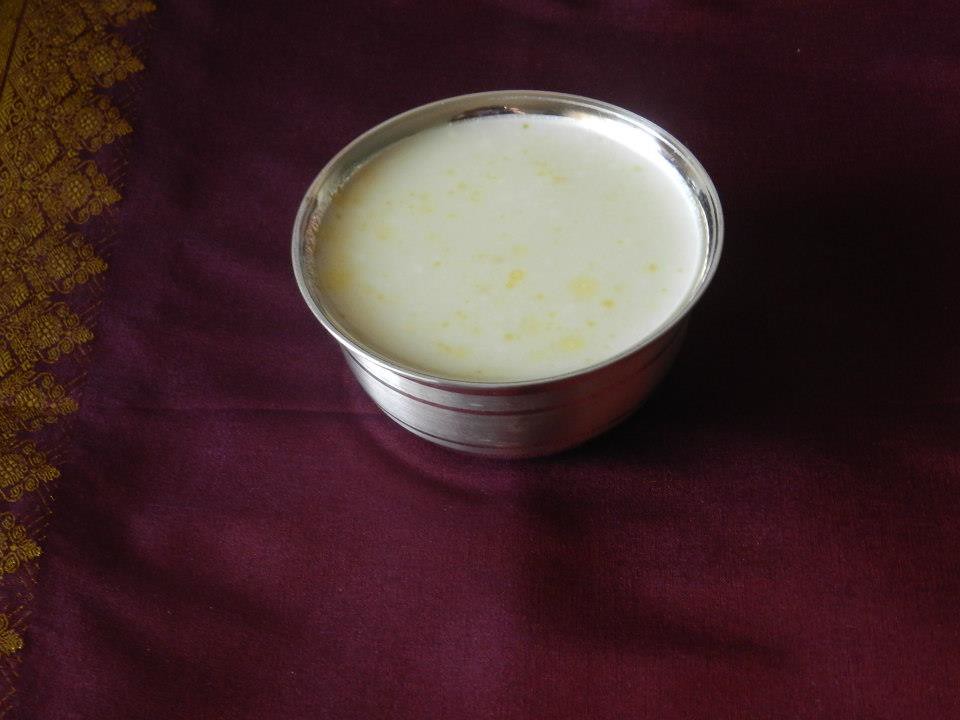
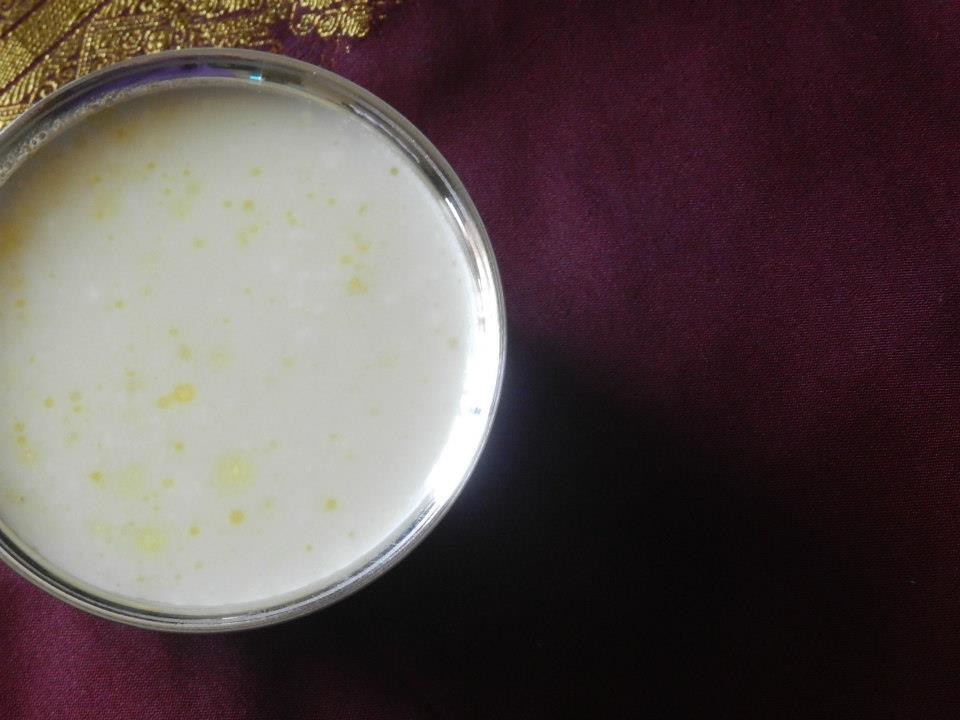
Both of us have always asked for answers with elders, but in vain. The idea about the origin of traditions is completely lost. I just wish the meaning and significance was retained, so that we could understand what were our ancestors thinking when they came up with such laborious traditions. Was there any practical explanation for these things? Or was it just a blind belief? We haven’t heard any answers for these questions ever!
Preparation of Panchamrita is also one such wonder. It tastes so wonderful, I just cannot imagine what made our ancestors come up with such an exotic and tasty sweet. The origin of the recipe is what I started looking for.
One can find that the origin is written beautifully in a story / episode of Mahabharata named as “Samudra Manthan”. This part of Mahabharata is one of the very popular episodes in the epics. An evening when Vinay and I read the story, we were entertained with a slight humour that is inculcated in the story. Yet, I found that the preparation / ingredients of “Panchamrita” has not been mentioned in this episode, instead, the significance of this nectar has been glorified very well. “Samudra Manthan” is a process of churning of the ocean milk.
According to the legend, Panchamrita is called as “The Nectar of Immortality”, which means that anyone who would take a sip of this sweet syrup, they would attain immortality. Very fictitious isn’t it? :)
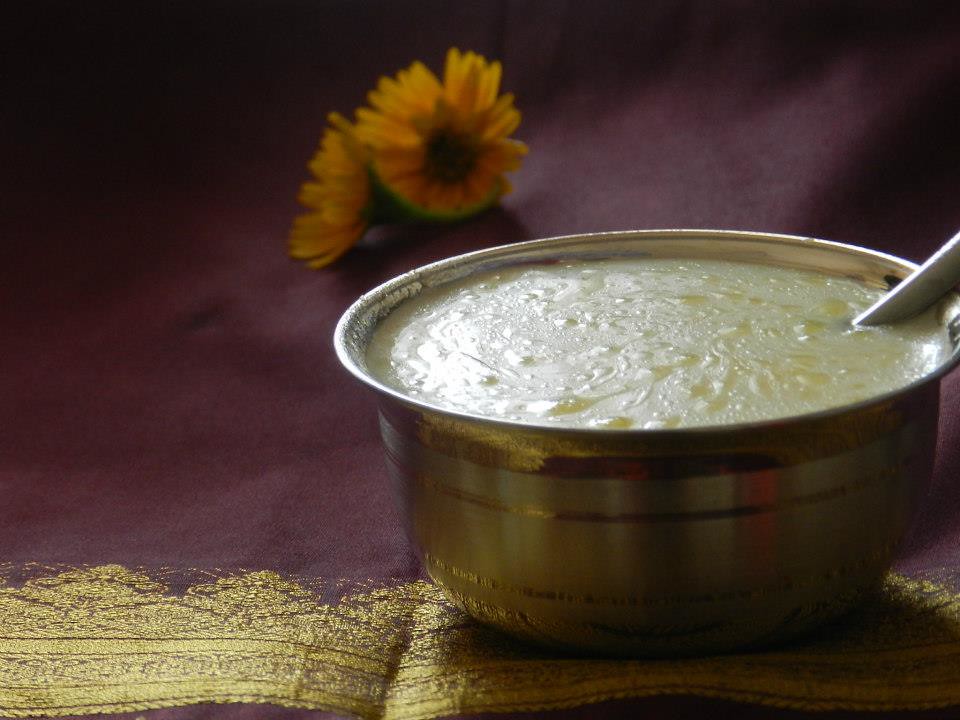

The Story of Samudra Manthan (Reference from Mahabharata: Section XVIII of Astika Parva)
Lord Indra was on an elephant ride when he came across Durvasa, a sage, who offered him a garland. Lord Indra accepted the garland and tucked it to his elephant’s trunk. The elephant was unable to withstand the fragrance of the garland and hence did away with the garland. Durvasa was enraged by the scene and told Lord Indra that it was a garland that would bring wealth and strength to him. Durvasa then cursed Lord Indra and all devas (the good people) that they should be deprived of strength and wealth. Following this incident, the devas lost their battle against the demons (the bad people) led by Bali and lost all their strength and wealth as well.
The devas sought advice from Lord Vishnu who suggested that the demons had to be tricked if the devas had to get back their lost powers. Vishnu suggested that the devas should form an understanding with the demons that they (devas and demons) will jointly churn the ocean milk (On which Vishnu sleeps) and extract the “Nectar of Immortality” and share the sweet nectar amongst themselves. But Vishnu gave his word that he will ensure that the nectar is benefited by the devas alone at the climax.
The devas then collaborated with the demons and decided to churn the ocean of milk together and enjoy the final benefits. In order to the churn the ocean milk, there was a need of a large churning rod and a large churning rope. They decided to use the mountain Mandarachala as the rod and the serpent Vasuki as the rope. Vasuki is known to be the king of serpents. On the advice of Lord Vishnu, the devas decided to hold the tail of the serpent and the demons had to hold the head.
They began the churning process. The serpent Vasuki released a lot of poisoned fumes from its mouth as a result of which many demons, who were holding the head, were poisoned. Still unperturbed, the demons and devas continued the churning process and this made the mountain rotate and the ocean milk began to churn. This process is popularly named as “Samudra Manthan”. During this event, many good and bad things were released from the milk ocean. A venomous poison named “Halahala” was released which was swallowed by Lord Shiva in rescue. Also, 14 precious gems/gifts were released which was shared among the devas and demons. In my observation, the best gifts were intelligently taken by the devas ;)
Now comes the release of the “Panchamrita”. This part of the story is the main highlight of how the devas acquired their lost powers.
During the churning process, there emerged Dhanvanthri (Supposed to be known as the God of Ayurvedic Medicine) with a pot in his hand that contained the nectar. The demons and devas were hassling with each other to get an opportunity just to have a sip of the nectar and attain immortality. In the split of a second, Garuda, the divine bird, snatched the nectar pot and flew away with it. Rahu, one of the demons,somehow got hold of the nectar pot. The devas were terrified with the scene and sought help of Lord Vishnu.
Lord Vishnu disguised himself as Mohini, who is said to be a very beautiful and elegant woman. She distracted the demons and took away the nectar pot from them and gave it to the devas. The devas drank the nectar. Amidst this scene, Rahu disguised as one of the devas and drank the nectar as well. The switching of sides of Rahu was observed by the Sun and Moon Gods, and they informed Mohini about this. Mohini wanted to kill Rahu before the nectar could pass through his throat. She cut off his neck with her Sudarshana Chakra (A Sharp blade like wheel). But he had already swallowed the nectar and hence he did not die. His body was in two parts from then, his head has been called as Rahu and body as Ketu.
In the end, the devas who got back their powers, defeated the demons, and remained immortals thereafter!
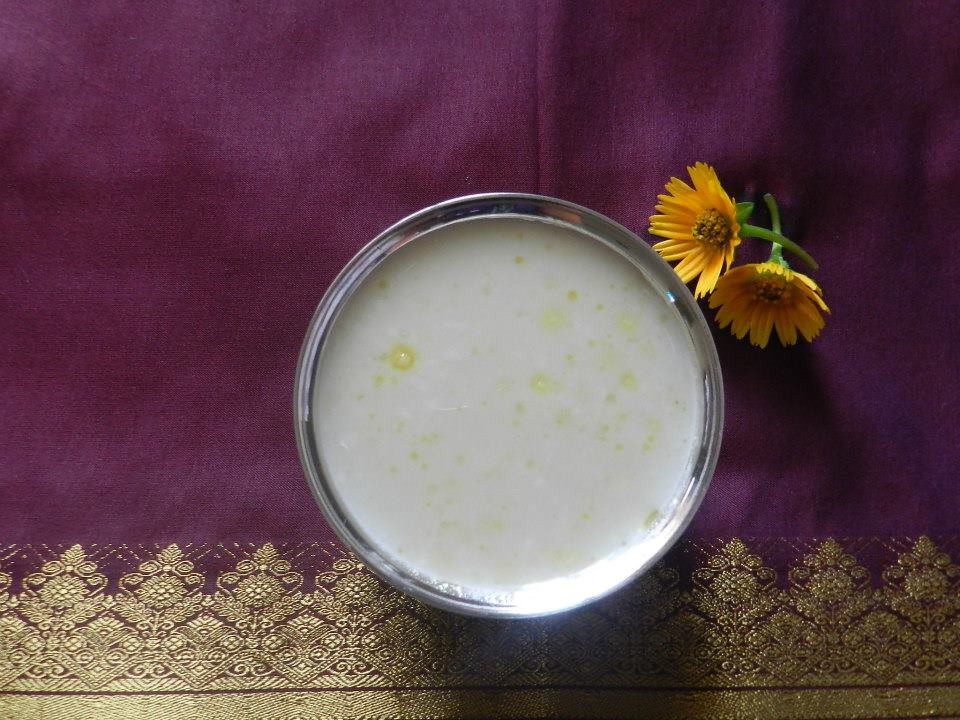
The preparation has not been mentioned in this story. But then, the significance has been beautifully covered by the author. I was mesmerized by the whole plot.
Panchamrita (A Sweet Syrup)
- Panchamrita is a simple combination of five ingredients i.e. Milk, Yoghurt, Sugar, Honey and Ghee. It is supposed to be originated from the epic “Mahabharata”.
Ingredients
- 1 cup of Milk
- 1 cup of Curd
- 2 tbsp of sugar
- 1/4 cup of honey
- 2 tbsp ghee
- 1 ripe banana (Chopped finely) – Optional
Directions
- Mix all the above mentioned ingredients and stir well. Your sweet concoction of Panchamrita is ready to be sipped.
- Remember: This is not to be served in big quantities. The above preparation can be shared among 3 to 4 people.
- Mix all the above ingredients well and serve chilled.
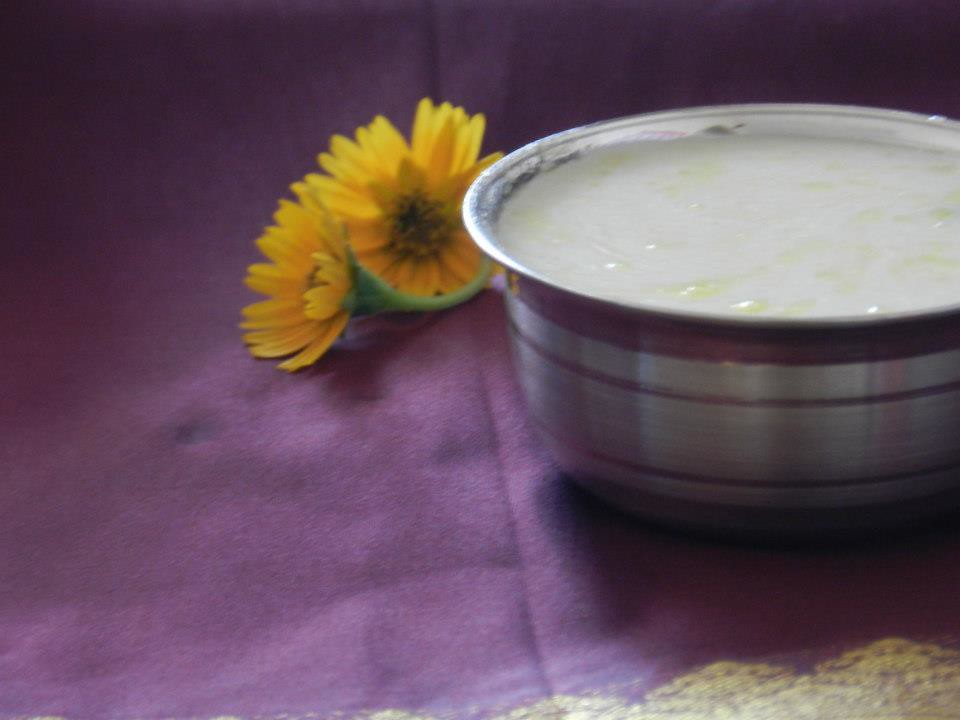

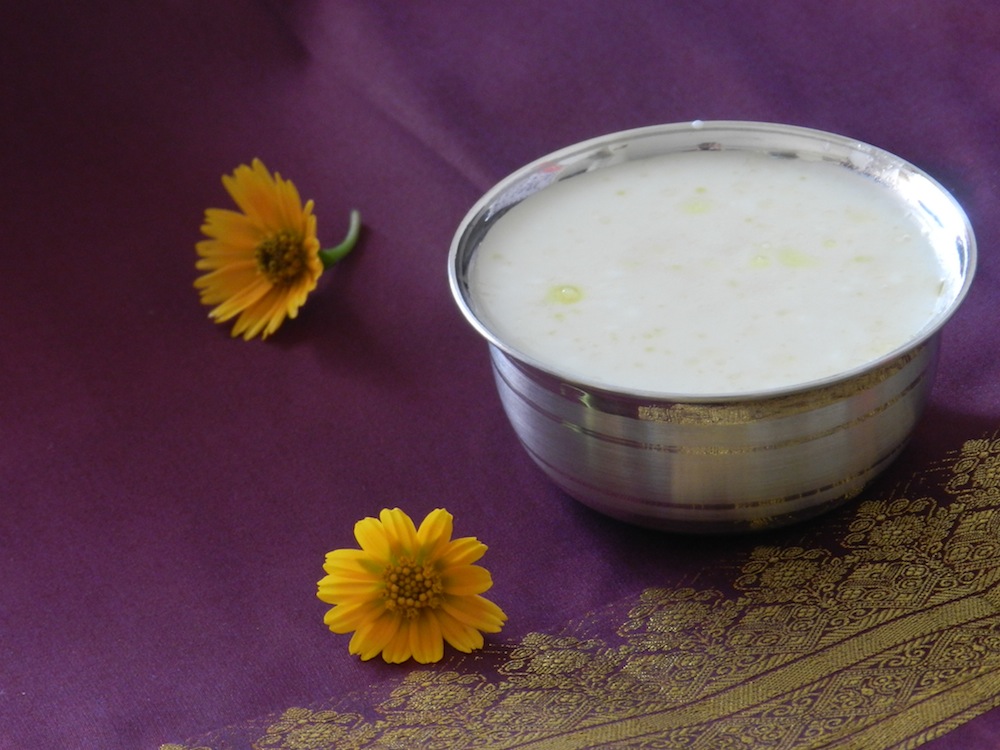
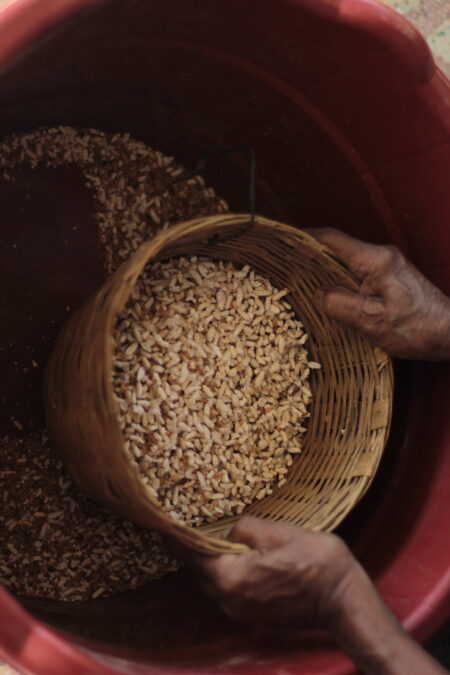
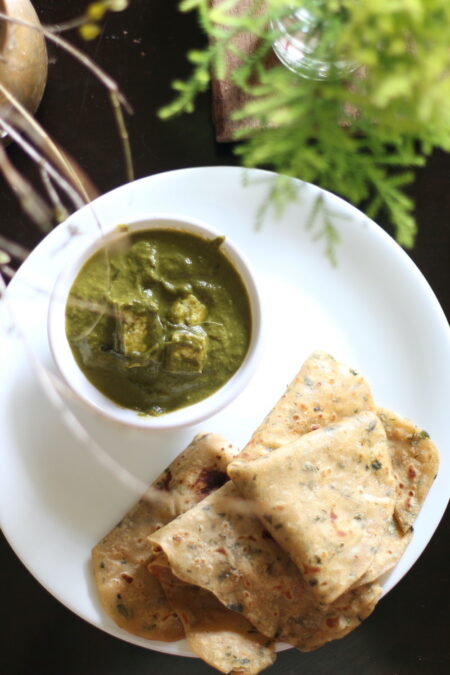

Is Panchamrit good for women with uterine fibroids and PCOS?
Hello Neha, I haven’t heard about panchamritha being used for uterine fibroids and PCOS. You have to check with a physician to know more about this.
Is panchamrit good for women with PCOS, and uterine fibroids?
I wish to introduce myself as a Biochemist and researcher in Nutraceuticals….I pride myself as a practicing Brahmin and an ardent student of Hinduism.While researching on the efficacy of Panchamrut,I came across your excellent platform for knowledge and ancient wisdom and I congratulate all of you for it.We have all grown up with these individual stories from our holy scriptures but the way they have been knitted together by you is very creditable.I would like to add that each and every constituent of Panchamrut has phenomenoal curative properties according to our science and are suitable for all age groups….neonatal to geriatric…moreover, they individually and collectively greatly facilitatate the process of flushing off toxins from the body.
Thank you. I never knew of Panchamrith being used for cleaning up the digestive tract. Thanks for the info. :)
Intresting blog!! Your photographs are great!
Thank you :)
Pratiba, churning of the Milk Ocean and Mohini Murti is narrated in detail in Bhagavat Purana, 8th Canto.
The primordial matter, prakriti, consisting of three modes of nature (sattva, rajas and tamas), generates four groups of five. The first group is elementary: earth, water, fire, air and ether. The second group is tan-matra, the subtle sense objects: sound, touch, form, taste and smell. The third group is the five sense organs for acquiring knowledge: eyes, ears, nose, tongue and skin. The fourth group is the five working senses: speech, hands, feet, anus and genitals. Pancamrta therefore stands for offering all material elements back to Sri Vishnu by bathing Him with milk, yogurt, ghee, jaggery and honey, and thus engaging the mind, intellect and self in a conscious practice of love, puja. Just like Ganga which springs from Sri Vishnu’s lotus feet, pancamrta becomes caranamrta and purifies internally and externally. It is a blessing for a spiritual elevation, individually and as a community. The immortality comes from the contact with the source of everything, not from the compatibility of the elements themselves.
Milk, yogurt and ghee come from cows. They are pure and sattvik. Jaggery and honey increase their deliciousness. Krishna is the protector and friend of cows. Therefore, any yajna is incomplete without milk-products.
Dear Lakshmi, you are the best when it comes to narration. I’m so happy you pulled out time to write this down and throw light on the roots of the story. Thank you so much. :)
Neetu: Thank you. It my Pleasure :)
I really want to thank you for for coming up with such a beautiful blog ………………. and sharing your knowledge great job………..!
Happy Janmashtami dear.. im sure you would have prepared a whole lot of lovely food…
Thanks. :)
Dear Pratibha,
I am very happy to read the explanation and your eagerness to know the things of our customs. Here are some information to quench your thirst.
First of all we do pooja to gain peace of ming through which physical strength right. we ask God to give something or the other.
here we offer milk to get peace of mind
yogurt ” ” long life
ghee ” ” gnana or tejassu
honey ” ” good health
sugar ” ” good people and good thoughts around us.
We bathe the idle with these during pooja and take it as prasada.
in due course we gain all these because positive thoughts will give positive results right.
Hope may like it.
good job. keep it up. God bless u.
Chikkamma. Thank you for your wonderful comment. I’m really happy you added more life to this post. Thank you so much. :)
I have updated the recipe for serving it as a payasam.
Pratibha. as someone has asked here, thought i will do it for pooja and then serve it as payasam to family. can you specify the quantities if we want to make it that way. hope im not troubling you too much. nice writing. i liked the story narration. it has come wonerful.
drooooooollllll!!!!
such a tempting sweet and only teaspoons for consumption.? why? cant we have a whole bowl of it? i mean i understand there is some ritual behind it but serving it just in teaspoons is so mean :(
just enjoy the dish n forget about the story behind.it
they are meant for kids to put them to sleep/
William: :D Thanks!
Deepak: Your comment made me smile :) I would advise you to eat it in small quantities. Its good to eat it this way. But still if you want to eat in large amounts then increase the quantity of all ingredients and decrease the amount of ghee.
Arundhati: Thanks :)
Aww.. awright!! hehe. Thanks. :D btw.. stunning camera work i must say!
wow!!! such an intellectual write up. i must say u hav a depth of patience to read “Mahabharat” an all. With due respect im saying this. really great post! wonderful wonderful pictures. im surely gonna cum back to read more cool stuff. cheers!!!
Harshvardhan: Thank you so much. Well, I am not a reader of “Mahabharata”. This is just a small section of it. :)
Latha: Thanks for your valuable input ma’am :)
Divya: Thanks a lot Divya :)
this story has lot of significance. not only the panch amruth it is also the story of Lord Vishnu’s different avatars. Dhanavanthri is also Lord Vishnu’s avatar. you have written everything perfectly. congrates.photos are very good. looks heavenly
This is the best written post ever!! The vocabulary, the story, the punch words, the recipe, the stress on the five elements have been projected so elegantly and so beautifully.. You rock Pratibha..!!! Hats of to you. I am definitely gonna try this tonight.